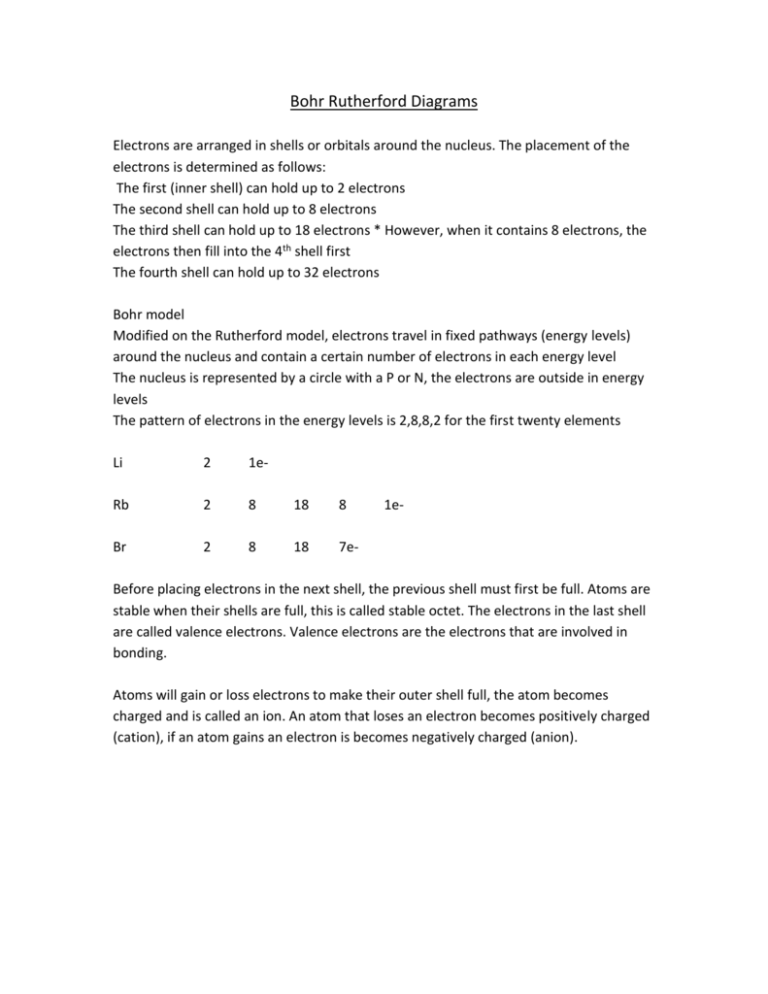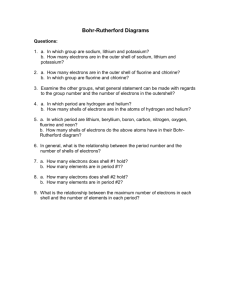Bohr Rutherford Diagrams
advertisement

Bohr Rutherford Diagrams Electrons are arranged in shells or orbitals around the nucleus. The placement of the electrons is determined as follows: The first (inner shell) can hold up to 2 electrons The second shell can hold up to 8 electrons The third shell can hold up to 18 electrons * However, when it contains 8 electrons, the electrons then fill into the 4th shell first The fourth shell can hold up to 32 electrons Bohr model Modified on the Rutherford model, electrons travel in fixed pathways (energy levels) around the nucleus and contain a certain number of electrons in each energy level The nucleus is represented by a circle with a P or N, the electrons are outside in energy levels The pattern of electrons in the energy levels is 2,8,8,2 for the first twenty elements Li 2 1e- Rb 2 8 18 8 Br 2 8 18 7e- 1e- Before placing electrons in the next shell, the previous shell must first be full. Atoms are stable when their shells are full, this is called stable octet. The electrons in the last shell are called valence electrons. Valence electrons are the electrons that are involved in bonding. Atoms will gain or loss electrons to make their outer shell full, the atom becomes charged and is called an ion. An atom that loses an electron becomes positively charged (cation), if an atom gains an electron is becomes negatively charged (anion).






